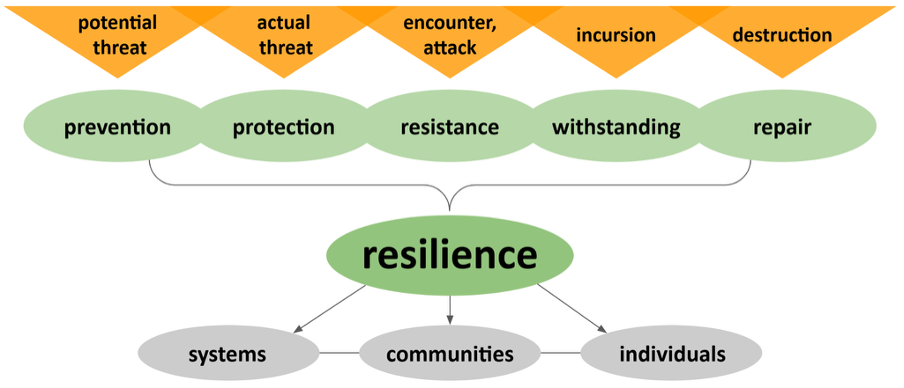This post is the third in a four-part series by Jennifer Gibson. The first post, on the shape and impact of research communication is available here. Reactions from readers are very welcome. Please use the commenting function.
Before I dive into this part of the discussion, I’d like to credit Damian Pattinson and Stuart King at eLife, with whom I worked to develop the three first tenets below in 2020 and 2021, as eLife's core values. As clear and relatable as these tenets will be, to many, it’s a lot of work and discussion to articulate them in a way that feels right and is supported by each of our many stakeholders. And, having done that work together for one open research initiative, I feel I can’t leave them behind as I move to another, as I did in leaving eLife for Dryad in October 2021. I hope and expect many of our readers support them, as well – though it’s not a prerequisite for reading on (!) or commenting.
___________________
Now, casting our minds back to Simone Martini and the challenge to bring publishing and research communication to the height of 21st-century human capability and values (in our first post), including those suggested by colleagues in our second post, what do you think we should do?
What should a system that drives the release and use of research in every discipline, for every community everywhere, in the age of the Apple watch, look like?
Here are four tenets to consider, to describe an optimised, future state for research communication, which my current and past colleagues and I – and many others – are working toward.
Tenet I: Open
A modern system for research communication must be open, interconnected and fast.
It is unfettered: there are no financial, technical or legal barriers for humans or machines to access research proposals, methods, data, code, early reports or completed analyses.
In the same way that I can search, find and buy the perfect steel-grey, solar-powered, vertical lights for my Cambridge garden with Pinterest, we can search and find experts, current data, past data, and protocols for new work on viral receptors for hepatitis B or the type of oak tree King Charles II hid in after the Battle of Worcester in 1651 (credit to my British citizenship exam for that last).
At the same time, we need also to be mindful of the origins of knowledge in the network, support the bidirectional flow of information that Reggie talked about (also in our second post), and ensure credit if not ownership of the material is carried with it.
Only in a fully open and interconnected global research environment can we connect code, data and other objects in real time and leverage the full computational power of the Internet as we should.
Tenet II: Trusted
In a modern system, experts engage with the global open research network and provide essential validation, evaluation, and feedback on newly available objects.
We no longer depend on the journal title or Impact Factor to judge the quality or importance of new contributions. Rather, expert comments, which are also open to search and discovery, signal to readers and potential collaborators what’s relevant and reliable.
The need for expert validation came into focus in 2020, when a surge of new findings related to the COVID pandemic were made available as preprints, ahead of peer review, and found wanting. There is a balance to be struck between making new results immediately available to those who need them, understand them and can build upon them, and adding appropriate layers of interpretation for other readers. While eLife is one of a small number organisations pioneering expert validation for preprints, it’s work with colleagues at eLife that helped me to understand and embrace trust as a tenet of a healthy and powerful open research system.
Tenet III: Inclusive
It’s imperative that this system works in service of everyone, worldwide.
In a modern system, early-career researchers, experts from the Global South, North, East and West, can have their perspectives seen and known.
And, measures are taken to adapt the culture of research to be more inclusive, to better recognise our biases and work to overcome them, to build respectful spaces, and to traverse differences in language. Again, if I can translate Tweets and Facebook posts on my iPhone, how much farther behind should research dialog be?
Tenet IV: Appropriately incentivised
A powerful, modern system for research and scholarship also features appropriate incentives.
We must stop requiring emerging scholars to publish in journals that only release a certain number of issues and papers each year. It’s 2021. Maintaining this type of artificial scarcity is nonsensical and it’s harmful.
Rather, research assessment practises will showcase and encourage open sharing, constructive feedback, collaboration, inclusion, and fostering success for emerging scholars.
In sum, I’d like to emphasise that, in order to bring publishing and research communication to the height of 21st-century human capability and values, and drive the release and use of research in every discipline, the system must be open, trusted, inclusive, and appropriately incentivised.
In my next and final post, a call to action to all of us, and to everyone we work with in research communication and academic publishing to help realise these tenets with me.
Copyright © 2022 Jennifer Gibson. Distributed under the terms of the Creative Commons Attribution 4.0 License.




